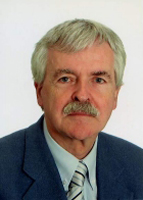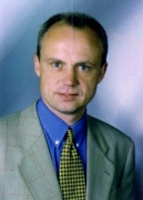
National Publications
The following publications used ISAAC data from Germany:
- Keil U, Weiland SK, Duhme H, Chambless L. The International Study of Asthma and Allergies in Childhood (ISAAC): objectives and methods; results from German ISAAC centres concerning traffic density and wheezing and allergic rhinitis. Toxicol Lett 1996; 86(2-3): 99-103.
- Duhme H, Weiland SK, Rudolph P, Wienke A, Kramer A, Keil U. Asthma and allergies among children in West and East Germany: a comparison between Münster and Greifswald using the ISAAC phase I protocol. Eur Respir J 1998; 11(4): 840-7.
- ISAAC. ISAAC Phase II Modules. Münster, Germany.May 1998.
- Weiland SK, von Mutius E, Hirsch T, Duhme H, Fritzsch C, Werner B, Hüsing A, Stender M, Renz H, Leupold W, Keil U. Prevalence of respiratory and atopic disorders among children in the East and West of Germany five years after unification. Eur Respir J 1999; 14(4): 862-70.
- Wellie O, Duhme H, Streit U, von Mutius E, Keil U, Weiland SK. Application of geographical information systems in epidemiological studies exemplified by the ISAAC study in Munich. Gesundheitswesen.2000 Aug-Sep;62(8-9):423-30.German.
- Rzehak P. ISAAC Phase II Coding and Data Transfer Manual. Muenster/Ulm, Germany. October 2000
- Liese AD, Hirsch T, von Mutius E, Keil U, Leupold W, Weiland SK. Inverse association of overweight and breast feeding in 9 to 10-y-old children in Germany. Int J Obes Relat Metab Disord.2001 Nov;25(11):1644-50.
- von Ehrenstein OS, von Mutius E, Maier E, Hirsch T, Carr D, Schaal W, Roscher AA, Olgemoller B, Nicolai T, Weiland SK. Lung function of school children with low levels of alpha1-antitrypsin and tobacco smoke exposure. Eur Respir J 2002; 19(6): 1099-106.
- Maziak W, von Mutius E, Beimfohr C, Hirsch T, Leupold W, Keil U, Weiland SK. The management of childhood asthma in the community. Eur Respir J 2002 Dec; 20(6): 1476-82.
- Renz H, von Mutius E, Illi S, Wolkers F, Hirsch T, Weiland SK. T(H)1/T(H)2 immune response profiles differ between atopic children in eastern and western Germany. J Allergy Clin Immunol 2002; 109(2): 338-42.
- Maziak W, Behrens T, Brasky TM, Duhme H, Rzehak P, Weiland SK, Keil U. Are asthma and allergies in children and adolescents increasing? Results from ISAAC phase I and phase III surveys in Munster, Germany. Allergy 2003; 58(7): 572-9.
- Nicolai T, Carr D, Weiland SK, Duhme H, von Ehrenstein O, Wagner C, von Mutius E. Urban traffic and pollutant exposure related to respiratory outcomes and atopy in a large sample of children. Eur Respir J 2003; 21(6):956-63.
- Bolte G , Schmidt M, von Mutius E, Maziak M, Keil U, Nasca P, Weiland SK. The relation of fetal growth with asthma, allergies and serum IgE levels in children at age 5-7 years. Clin Exp Allergy 2004; 34(3):381-8.
- Maziak W, von Mutius E, Keil U, Hirsch T, Leupold W, Rzehak P, Behrens T, Weiland SK. Predictors of health care utilization of children with asthma in the community. Pediatr Allergy Immunol 2004;15(2):166-71.
- Behrens T, Maziak W, Weiland SK, Rzehak P, Siebert E, Keil U. Symptoms of asthma and the home environment.The ISAAC I and III cross-sectional surveys in Munster, Germany. Int Arch Allergy Immunol 2005 May;137(1):53-61.
- Zutavern A, Hirsch T, Leupold W, Weiland SK, Keil U, von Mutius E. Atopic dermatitis, extrinsic atopic dermatitis and the hygiene hypothesis: results from a cross-sectional study. Clin Exp Allergy 2005;35:1301-1308.
- Kabesch M, Schedel M, Carr D, Woitsch B, Fritsch C, Weiland SK, von Mutius E. IL-4/IL-13 pathway genetics strongly influence serum IgE levels and childhood asthma. J Allergy Clin Immunol 2006; 117(2):269-74.
- Schedel M, Depner M, Schoen C, Weiland SK, Vogelberg C, Niggemann B, Lau S, Illig T, Klopp N, Wahn U, von Mutius E, Nickel R, Kabesch M. The role of polymorphisms in ADAM33, a disintegrin and metalloprotease 33, in childhood asthma and lung function in two German populations. Respir Res.2006 Jun 19;7:91.
- Genuneit J, Weinmayr G, Radon K, Dressel H, Windstetter D, Rzehak P, Vogelberg C, Leupold W, Nowak D, von Mutius E, Weiland SK. Smoking and the incidence of asthma during adolescence: Results of a large cohort study in Germany. Thorax 2006 Jul; 61(7):572-8.
- Radon K, Huemmer S, Dressel H, Windstetter D, Weinmayr G, Weiland SK, Riu E, Vogelberg C, Leupold W, von Mutius E, Goldberg M, Nowak D. Do respiratory symptoms predict job choices in teenagers? Eur Respir J 2006 Apr; 27(4):774-8.
- Radon K, Riu E, Dressel H, Windstetter D, Weinmayr G, Weiland S, Vogelberg C, Scharrer EM, Leupold W, von Mutius E, Nowak D. Adolescents' jobs and the course of dermatitis symptoms throughout puberty. Scand J Work Environ Health.2006 Apr;32:132-7.
- Büchele G, Rzehak P, Weinmayr G, Keil U, Leupold W, von Mutius E, Weiland SK. Assessing bronchial responsiveness to hypertonic saline using the stepwise protocol of Phase II of the International Study of Asthma and Allergies in Childhood (ISAAC II). Pediatr Pulmonol 2007 Feb;42(2):131-40.
- Depner M, Kormann MS, Klopp N, Illig T, Vogelberg C, Weiland SK, von Mutius E, Combadiere C, Kabesch M. CX3CR1 Polymorphisms Are Associated with Atopy but Not Asthma in German Children. Int Arch Allergy Immunol 2007 ;144(1):91-94. Epub May 2007.
- Kabesch M, Depner M, Dahmen I, Weiland SK, Vogelberg C, Niggemann B, Lau S, Illig T, Klopp N, Wahn U, Reinhardt D, von Mutius E, Nickel R. Polymorphisms in eosinophil pathway genes, asthma and atopy. Allergy 2007 Apr;62(4):423-8.
- Moffatt MF, Kabesch M, Liang L, Dixon AL, Strachan D, Heath S, Depner M, von Berg A, Bufe A, Rietschel E, Heinzmann A, Simma B, Frischer T, Willis-Owen SA, Wong KC, Illig T, Vogelberg C, Weiland SK, von Mutius E, Abecasis GR, Farrall M, Gut IG, Lathrop GM, Cookson WO. Genetic variants regulating ORMDL3 expression contribute to the risk of childhood asthma. Nature.2007 Jul 26;448(7152):470-3.Epub July 2007.
- Vogelberg C, Hirsch T, Radon K, Dressel H, Windstetter D, Weinmayr G, Weiland SK, von Mutius E, Nowak D, Leupold W. Leisure time activity and new onset of wheezing during adolescence in Germany. Eur Respir J 2007 Oct;30(4):672-6.Epub Jun 2007.
- Riu E, Dressel H, Windstetter D, Weinmayr G, Weiland S, Vogelberg C, Leupold W, von Mutius E, Nowak D, Radon K. First months of employment and new onset of rhinitis in adolescents. Eur Respir J.2007 Sep;30(3):549-55.Epub May 2007.
- Schedel M, Pinto LA, Schaub B, Rosenstiel P, Cherkasov D, Cameron L, Klopp N, Illig T, Vogelberg C, Weiland SK, von Mutius E, Lohoff M, Kabesch M. IRF-1 gene variations influence IgE regulation and atopy. Am J Respir Crit Care Med.177(6):613-21, 2008 Mar 15.
Germany, Western Europe
| Centres: | Phase: | PI: | Age Groups |
|---|---|---|---|
| Greifswald | 1 | Professor Axel Kramer | 13-14, 6-7 |
| Münster | 1 | Prof Dr Ulrich Keil | 13-14, 6-7 |
| Dresden | 2 | Professor W Leopold | 9-11 |
| Munich | 2 | Professor Erika von Mutius | 9-11 |
| Münster | 3 | Prof Dr Ulrich Keil | 13-14, 6-7 |
Prof Dr Ulrich Keil

Institut für Epidemiologie und Sozialmedizin
Westfälische Wilhelms Universität
Domagkstrasse 3
Germany
Roles:
- ISAAC Steering Committee
- Regional Coordinator for Western Europe
- National Coordinator for Germany
- Phase One Principal Investigator for Münster
- Phase Three Principal Investigator for Münster
Prof Dr med Stephan Weiland

Institute of Epidemiology
Ulm University
Helmholtzstr. 22
Germany
Roles:
- ISAAC Executive
- ISAAC Steering Committee
- National Coordinator for Germany
As we all know, ISAAC originated in Bochum, Auckland and London and therefore it is no surprise that the first ISAAC Study in Germany took place in Bochum. It was part of a pilot study which, besides Bochum comprised regions in New Zealand, Australia and England. The publication which originated from this pilot study has the title " Self-reported prevalence of asthma symptoms in children in Australia, England, Germany and New Zealand: An international comparison using the ISAAC written and video questionnaires." Eur Resp J 1993;6:1455-1461.
The ISAAC data from Bochum also helped producing another landmark paper, which deals with traffic density on street of residence and wheezing and symptoms of allergic rhinitis in children. The positive results derived from these data stimulated the debate on diesel exhaust and its relation to asthma and rhinitis symptoms in children. The respective publication has the title " Self-reported wheezing and allergic rhinitis in children and traffic density on street of residence" and appeared in Ann Epidemiol 1994; 4: 243-247.
In 1993 I moved from Bochum to Münster and therefore we organized the first ISAAC Phase One study in our new home town Münster.I was happy to secure funding for this study from the ministry of the environment of the state of North-Rhine Westphalia, the most populous state in the Federal Republic of Germany. (18 million)
The great political changes of 1989 and the 1990ies lead to the unification of Germany. In this context the universities in the eastern part of the country were evaluated by the German Wissenschaftsrat and among others I was asked to travel to Greifswald and help set up a community medicine program in the medical faculty of this old and prestigious university. As one can imagine ISAAC fitted very well in this community medicine program and I advised the medical faculty of the university of Greifswald to participate in the worldwide ISAAC project. Axel Kramer, professor of hygiene in Greifswald, became the principal investigator of ISAAC Greifswald and this is why Münster and Greifswald appear as the only German regions on the ISAAC world map publication in the Lancet in 1998.
The results concerning the prevalence of wheezing in Münster and Greifswald, respectively, corresponded to our expectations, namely higher prevalence figures in the west compared to the east. This was the situation in 1994/1995.
When ISAAC Phase Three came into being another cross sectional survey in Münster was performed in 2000 but the PI in Greifswald was unable to secure funding for another survey in this north eastern part of Germany. This is why time trends for asthma and allergies in the region of Greifswald are not available.
With hindsight it is sad to see that only two regions are representing Germany in ISAAC Phase One and only one region, namely Münster, is representing Germany in both ISAAC phases. Heinrich Duhme, my colleague in Münster, deserves special praise for having done such a wonderful job when organizing and carrying out the two cross sectional studies in Münster in 1994/1995 and 2000. For the ISAAC Phase One study Münster he received his PhD.
Why is it that only two regions, namely Münster and Greifswald, are representing Germany on the world map of asthma and allergies? Well, the answer is quite simple: ISAAC Phase One and Three was too simple for the German mind. Most colleagues in this field, for example in Munich or Berlin, wanted to do more sophisticated studies with clinical examinations and hopefully a genetic component. In light of this, ISAAC Phase One and Three were clearly underestimated and the enthusiasm for this part of ISAAC in Germany was limited.
The big hit for the scientific community in Germany was the "Verbundstudie", which was a study on ten year olds in Munich and Dresden, promoted and funded by the Federal Ministry of Research and Technology, and organized and administered from Münster. This study contained a number of clinical assessments in ten year old participants and later on developed also a strong interest in genetic questions. From this German "Verbundstudie", whose origin was in Münster, ISAAC Phase Two developed and when Stephan Weiland moved from Münster to Ulm in 2002 he transferred administrative and scientific tasks of this project to his new university institute in Ulm.
Because of scarce resources for the funding of the "Verbundstudie" it was not possible to also establish a study centre in Münster and therefore ISAAC Phase Two by many scientists in Germany and elsewhere was not seen as a project which originated in Münster, but a project whose study centres are in Munich and Dresden, with a data centre and an administrative centre in Ulm for the worldwide ISAAC Phase Two study.
Obviously, the merits of ISAAC phases one and three are overwhelming and I am very proud that Germany is represented by two regions. By the way, I will never forget the exact year of ISAAC Phase One in Münster, namely the time 1994/1995, because my youngest daughter, who was born in 1981, participated in ISAAC Phase One Münster as a 13-14 year old adolescent.
The evaluation and appreciation of the merits of ISAAC Phase Two I will leave to others. My impression is that many expectations, especially those in the field of genetics have not (yet) been met.
Whenever I go to Berlin and pass by Gendarmenmarkt I vividly remember our ISAAC Steering Committee Meeting in 1997 at the Berlin-Brandenburgische Akademie and a very pleasant site visit to Potsdam. It was at this meeting in Berlin when Stephan Weiland was elected member of the ISAAC Executive. As we all know he served on this committee very successfully for about 10 years until his untimely death in 2007.

